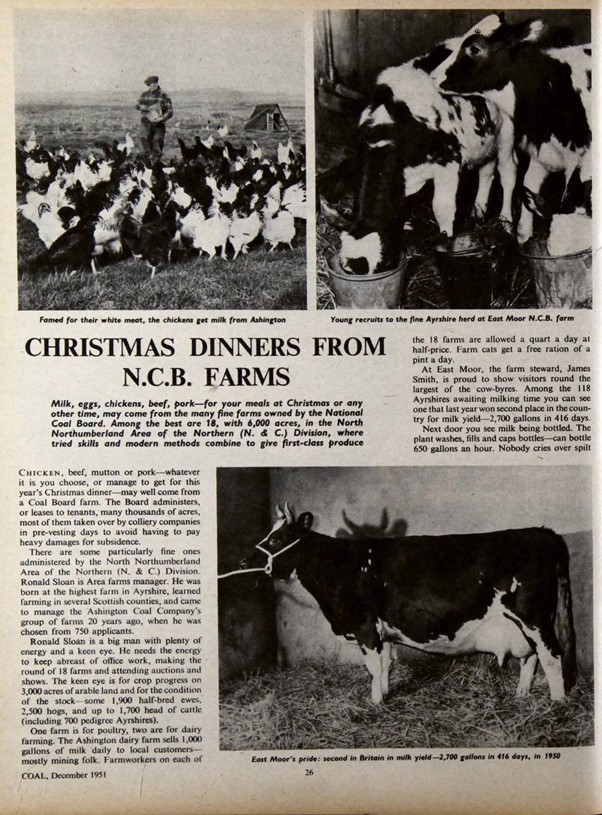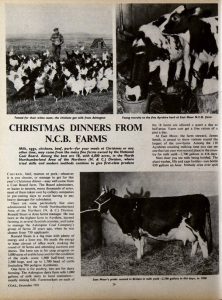Voices in the Coalshed: Food for Thought?
15 December 2022

Coal Board Farms?
‘Coal’, the Coal Industries magazine was rich and diverse in its range of stories, none more surprising than the article featured in the December 1951 edition.

It points out that the milk, eggs, chicken, beef and pork that some miners and their families would be having for their Christmas dinner had probably come from farms owned by the National Coal Board.
The NCB at this time administered and leased many thousands of acres to tenants. The majority of these were ones which privately owned colliery companies had acquired pre- nationalisation. Consequently, NCB found themselves dealing with livestock as well as winning the coal.
The article focused on the Ashington Coal Company group of 18 farms which comprised of 3,000 acres of arable land and stock (including 1,700 head of cattle, 2,500 hens, 1,900 ewes and 2,500 hogs). One farm was for poultry and two for dairy farming. The details given for the Ashington Dairy Farm was that the amount of milk it sold daily to local customers (mainly miners) was 1,000 gallons, and milk was bottled in a modern bottling plant on the farm.
It goes on to point out that farm workers could buy a quart of milk at half price each day – but the farm cat was allowed a pint of milk per day, free of charge! A large central granary at Ashington housed all the cattle feed grown on the farms. Chopped hay from the farms also supplied the 1,150 ponies working in the surrounding pits.
As recently as 1995, a report in Hansard detailing a debate in the House of Commons about the disposal of NCB property, stated that there were still 110,000 acres of agricultural land at that time.
Learn more fascinating facts by accessing the digitised version of ‘Coal’ via our website.
This weeks Voices in the Coalshed was researched and written by research volunteer Pam. If you would like to join Voices in the Coal Shed, please get in touch with voicesinthecoalshed@gmail.com